Denmark is almost entirely surrounded by the sea. Our access and connection to the water are deeply imprinted in our culture and history – in fact, all our 10 biggest cities are located near a coast or bank and home to approximately 1/3 of the population. However, this also means that rising sea levels pose a substantial and imminent threat in many parts of the country.
Through Realdania’s partnership with the Danish Ministry of Environment, we have supported 18 Danish cities (19 municipalities) in developing new strategies for managing risk and adapting to climate change.
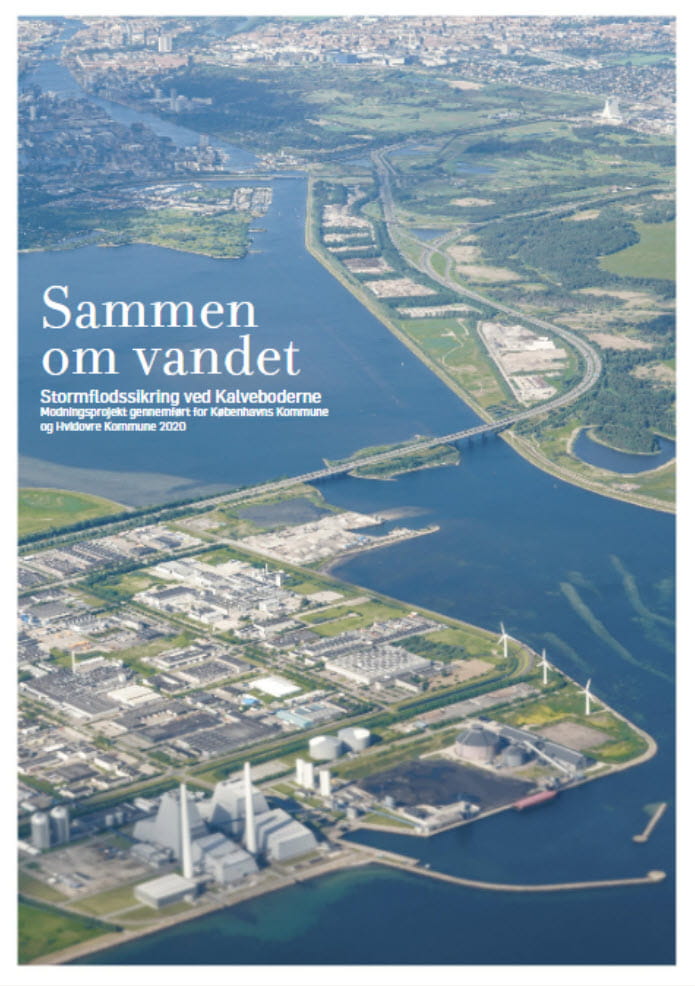
Plans, reports and presentations on sea level rise
Through our work with developing new answers to rising sea levels we have supported and published a number of plans, reports and presentations. Some are aimed at strengthening our general knowledge base on the subject of rising sea levels, others have been carried in connection to the climate adaptation projects we have supported locally in 18 Danish cities through our partnership with the Danish Ministry of Environment.
Overview of the 18 projects supported by Realdania
Realdania has supported the Municipality of Dragør in developing a plan for protecting the low-lying city, nature and cultural heritage of Dragør. A public consultation process and an architectural competition have informed the plan which presents a nature-based approach to protecting Dragør. Instead of working with walls and dikes, the plan draws inspiration from the natural coastal landscape and its ability to absorb the waves. By proposing to strengthen and connect the natural headland while realigning the flood protection and adapting the landscape surrounding the city, the plan lays out a solution that be extended over time and does not create a barrier between city and sea – in fact, is it expected to create more space for nature and native species while adding new recreational qualities for the people of Dragør and its many visitors.
In June 2022, Dragør Municipality was assigned 18 mio. DKK in additional support from Realdania for a partial realization of the plan.
'Morgendagens Dragør ' - plans for a robust coastal municipality
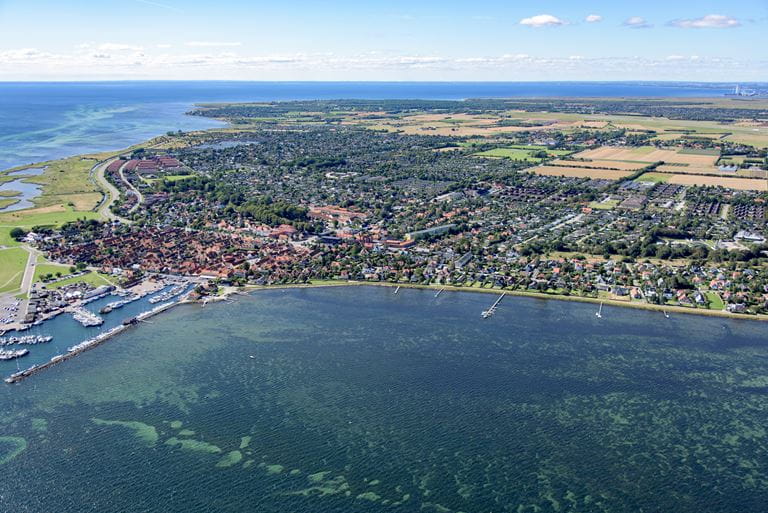
Resilience and adaptability are at the heart of Vejle Municipality’s strategy for managing the threat from storm-surge. With support from Realdania the municipality has carried out a public consultation process that draws on the ability of installation, art and video to engage the citizens in a dialogue on sea level rise as well as an open competition inviting artists and architects to develop new ideas on how to protect the city from flooding while adding recreational value. The winning proposal challenges our conventional understanding of a clear-cut coastal ‘line’ dividing water and land; in turn it envisions a new type of urban space that can work as a ‘membrane’, softening the transition between city and water, inviting the water in and allowing for new types of nature and species to settle along the waterfront.
In June 2022, Vejle Municipality was assigned 24,7 mio. DKK in additional support from Realdania for a partial realization of the plan.
Vejle Kommune's evaluation of the process
Contributions from the open ideas competition
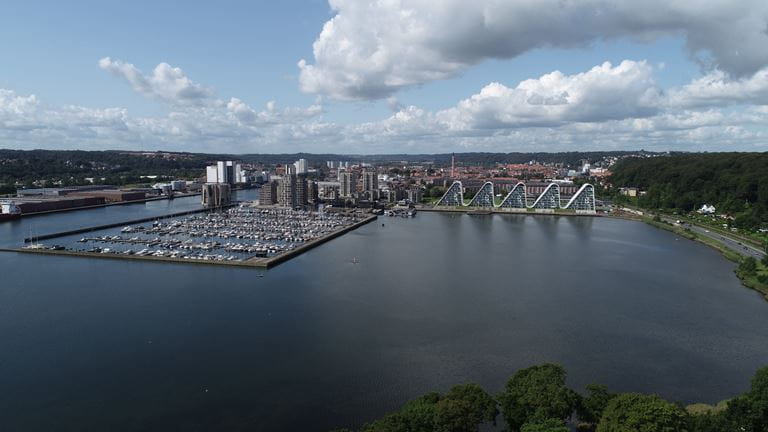
Would a landscape of undulating sand dunes be able to replace a dike for protecting Assens against flooding? This question has been at the heart of a pre-project review by Assens Municipality supported by Realdania. A number of technical analyses and reports have informed a proposal and visualisation of a nature-based solution where a new landscape of sand dunes along the coast can serve as protection against flooding and erosion while adding new recreational qualities to the area all year round – not just in case of storm-surge.
Proposal for a nature-based protection
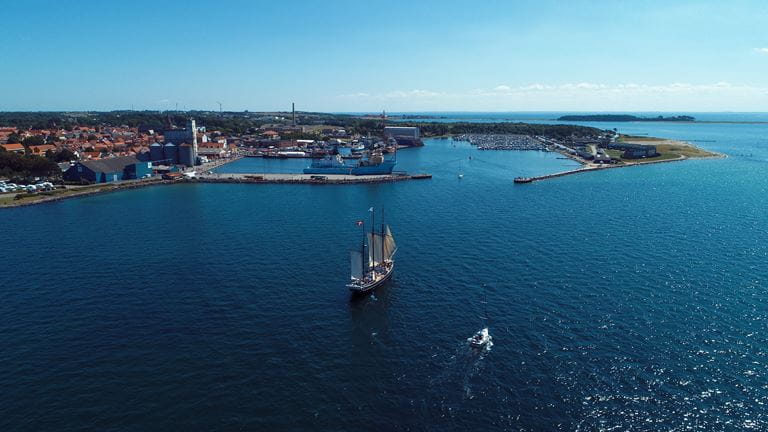
Realdania has supported the municipalities of Copenhagen and Hvidovre in developing a vision for protecting the capital area against storm surge from the south. A number of analyses and reports have informed the vision for a nature-based storm surge protection transcending several municipal boundaries along a 30 km coastal stretch.
The vision presents a variety of nature-based solutions on and off the coast – such as new stone reefs and vegetation, raising the terrain, beach nourishment, and a new headland off the coast – some places in combination with more technical solutions.
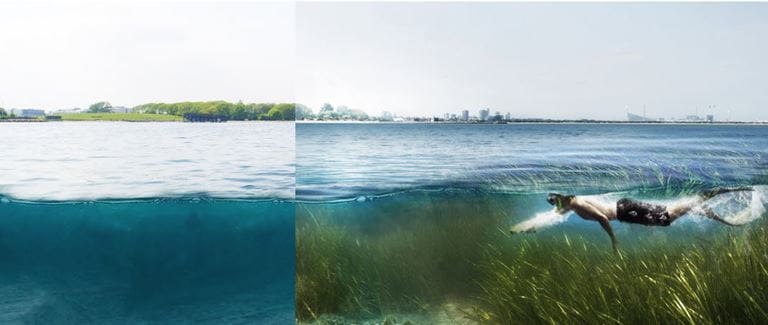
Juelsminde is a small coastal town with many holiday homes and a vibrant harbor. However, the area faces the sea in three directions and is particularly exposed to the risk of flooding. While the Municipality of Hedensted wants to establish a protection against flooding, they wish to do so in a way that will preserve the connection to the sea and coast so that Juelsminde will remain an attractive place to live and visit.
Realdania has supported the Municipality of Hedensted in developing a strategy that can guide the development of future solutions. The strategy – aptly titled ‘Grundejerne bestemmer’ (Property Owners Decide) – has been informed by public consultation and dialogue with stakeholders, in particular property owners in the area who have organized and formed an association during the process.
'Property owners decide' - a strategy to combine costal protection and urban development
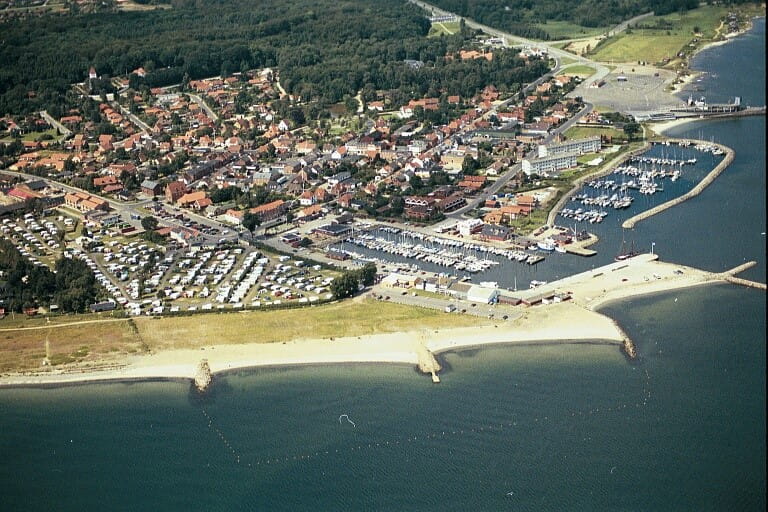
The municipality of Middelfart has invited citizens, scientists, businesses and visitors to take part in developing new solutions to protect the city of Middelfart from flooding. Realdania has supported the project which has resulted in a series of principles for coastal protection, a draft outlining a solution for a stretch along the waterfront – and insight from the process that can serve as inspiration for other municipalities.
'Havnelaboratoriet i Middelfart' - ideas and learnings from the process
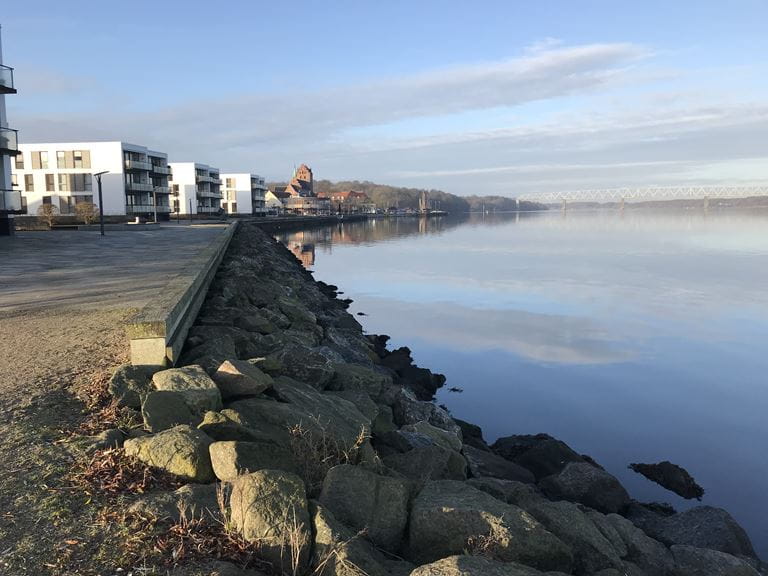
The Municipality of Randers has comprehensive plans for urban development and climate adaptation along the waterfront in the city of Randers – plans that call for legal, technical and political analysis and clarification before they can be put into action. In addition to this, the long time horizon for plans this scale and complexity means that it is necessary to look into topics such as minimization of risk, division of responsibilities, contingency plans etc.
Realdania has supported the development of an action plan, a strategy for implementation and a legal analysis aimed at supporting the municipality’s work to maintain and implement the vision in the coming decades.
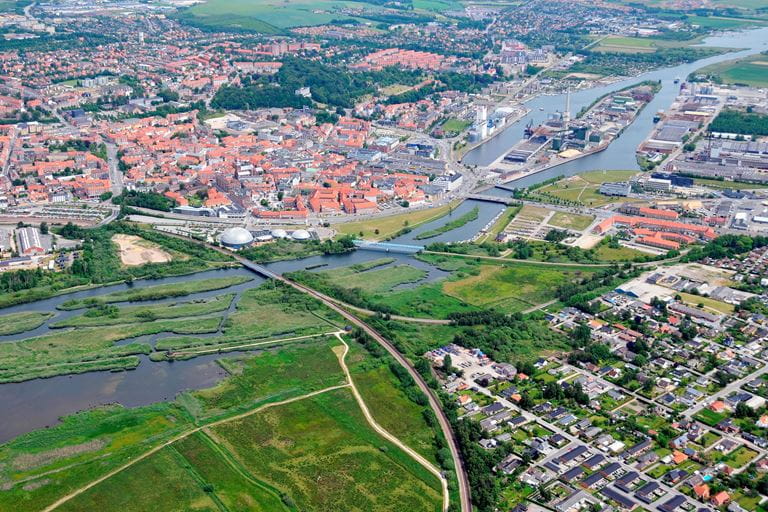
Strengthening the connection between the central part of Aabenraa and the water has been a wish for Aabenraa Municipality for years. One way of doing so is by opening some of the port areas for urban development, making space for new housing and recreational activities along the waterfront - while maintaining other areas in their current function as part of an active industrial port.
However, any potential decision to invest in and develop areas in this relatively low-lying part of the city must factor in the risk of flooding; in fact, development here could create an opportunity for protecting not only port areas but other parts of the city as well. Realdania has supported the Municipality of Aabenraa in developing a scenario analysis that can contribute to exploring the most intelligent future combination of transformation, urban development and climate adaptation for Aabenraa. The scenario analysis addresses uncertainties, dilemmas, challenges and possibilities through four different scenarios for urban development and climate adaptation in the next 100 years.
Aabenraa and the fjord - scenarios for the future
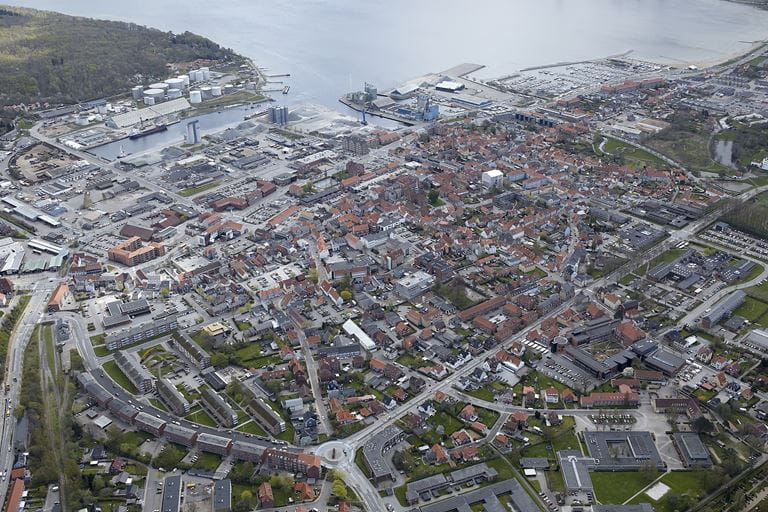
The coastal city of Grenaa is exposed to water from all sides - not only sea water poses a risk, so does a stream carring drainage water from a large area behind the city through the city center towards the coast before it flows into the sea. This meeting and interconnection between different types of water makes flood protection in Greenaa a complex task.
Realdania has supported the development of a strategic plan for protecting the city of Grenaa from the flooding while preserving the city's connection to the water as well as its maritime history and identity.
The project is still ongoing as of October 2022. This description will be updated with more information and material once the project has been concluded.
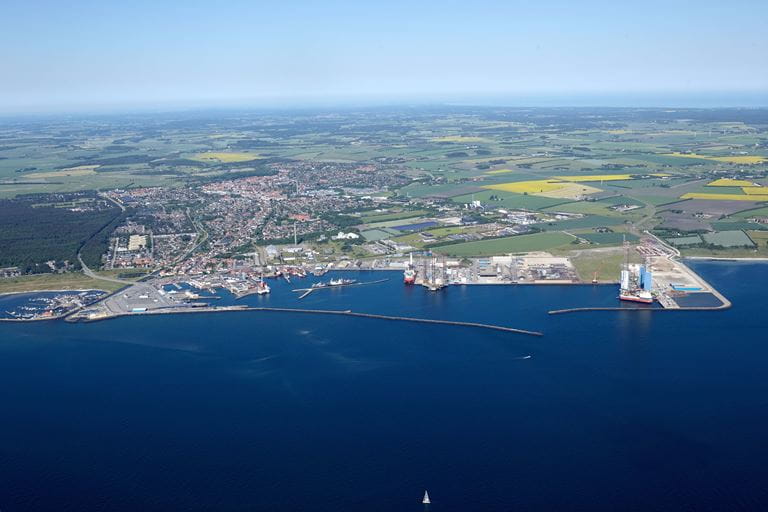
The city of Ebeltoft has a long history of adapting to the challenges and possibilities of life by the sea. Realdania has supported a development process and architectural competition aimed at integrating Ebeltoft's distinctive coastal culture, energy and long tradition for citizen-driven urban development into a strategic and physical plan for flood protection.
The project is still ongoing as of October 2022. This description will be updated with more information and material once the project has been concluded.
More on the project (Ebeltoft Municipality's website)
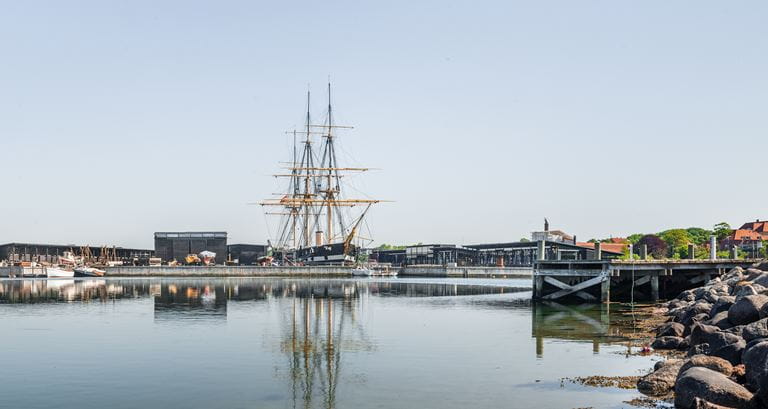
Skive Municipality's vision for the city of Skive charts out a new course for urban development which entails increasingly gravitating urban development towards the water way that traverses the city in order to realise the potential and qualities associated with living by the water. Realdania has supported a project that seeks to clarify how the city can realise its vision and ensure synergies between urban development and management of risk from rising sea levels.
The project is still ongoing as of October 2022. This description will be updated with more information and material once the project has been concluded.
.jpg?mw=768)
Realdania has supported Svendborg Municipality in examining the feasibility, long term-effect and economic consquences of a proposed solution for protecting the city of Svendborg from flooding while preserving the city's connection to the water and its cultural heritage. Because the proposed solution has a scale and cost that means that it will take time to finance and implement in full, the project also also explores the possiblities of managing risk mid- and long term until the proposed solution can been implemented, explores alternative solutions that can meet potential changes in preconditions over time and reassesses key principles.
The project is still ongoing as of October 2022. This description will be updated with more information and material once the project has been concluded.
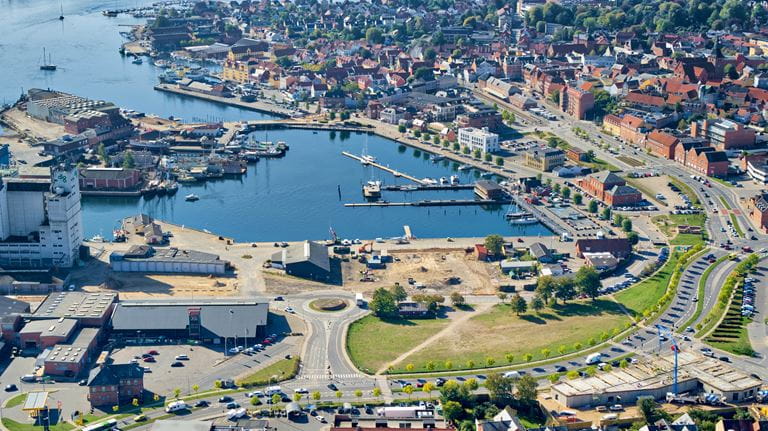
Realdania has supported Faaborg Municipality in strengthening the knowledge base for developing a flood protection that respects the city's cultural heritage and supports its transition from industrial city to a city of service and experiences.
The project is still ongoing as of October 2022. This description will be updated with more information and material once the project has been concluded.
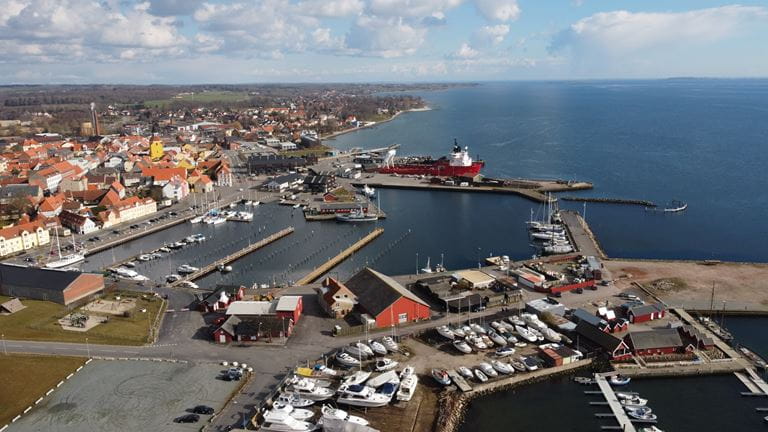
Strøby Egede's various small-scale, individual solutions and emergency efforts will not be sufficient to protect the community from flooding and erosion. A more comprehensive, shared approach is neccessary and will enable the municipality to work synergistically with urban development, coastal protection and a new nature park.
Realdania has supported Stevns Municipality in carrying out a process for developing a long-term vision and strategy for the protection of Strøby-Egede.
The project is still ongoing as of October 2022. This description will be updated with more information and material once the project has been concluded.
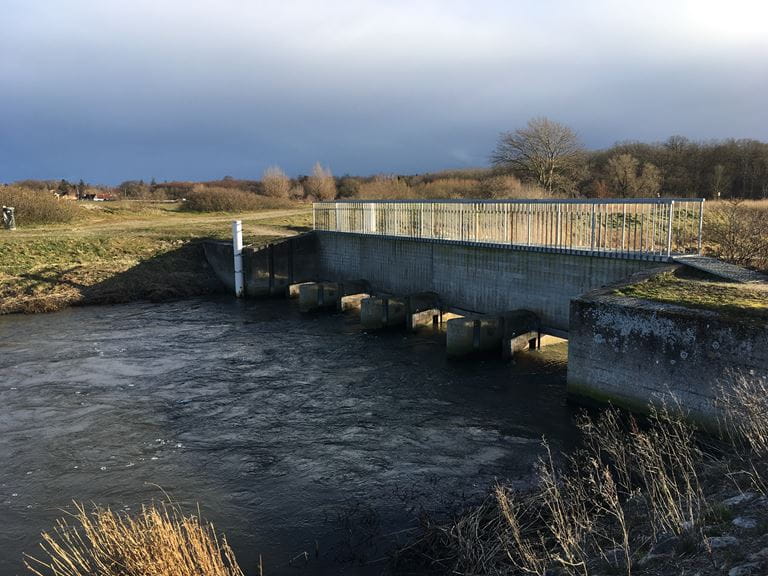
The city of Frederikssund is exposed to flooding from Roskilde Fjord. Currently, the city depends on a response team to secure the area with water tubes when a storm surge hits, but the Municipality of Frederikssund wishes to establish a more secure and permanent solution for protecting the city.
The ambition is to develop a solution that can be adapted over time as the city itself develops and evolves. Realdania has supported a process for engaging citizens and stakeholder in a dialogue on sea level rise and exploring possible solutions that can protect the city.
The project is still ongoing as of October 2022. This description will be updated with more information and material once the project has been concluded.
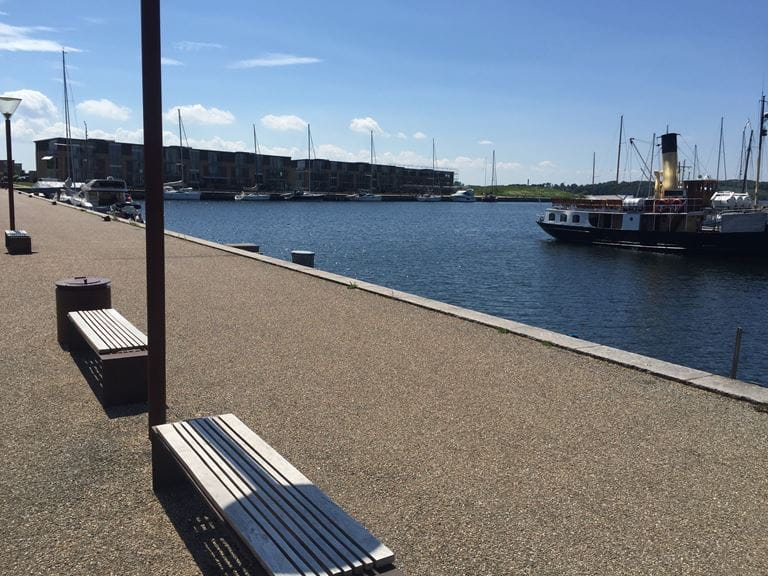
The city of Aalborg is undergoing a tranformation from industrial town into a city of knowledge and education with a string of new projects and functions along the waterfront. This development intensifies the need for adapting the city to a changing climate while preserving a vibrant harbour.
Realdania has supported Aalborg Municipality in carrying out a process for exploring how a 1 km stretch of former beach meadow in the Western part of the city can play a role in protecting not just the waterfront but also an adjacent, densely-populated area at risk of flooding. A number of technical analyses and reports have informed an architectural competition. The winner was appointed in August 2022, and next step is to develop a master plan for the area.
The project is still ongoing as of October 2022. This description will be updated with more information and material once the project has been concluded.
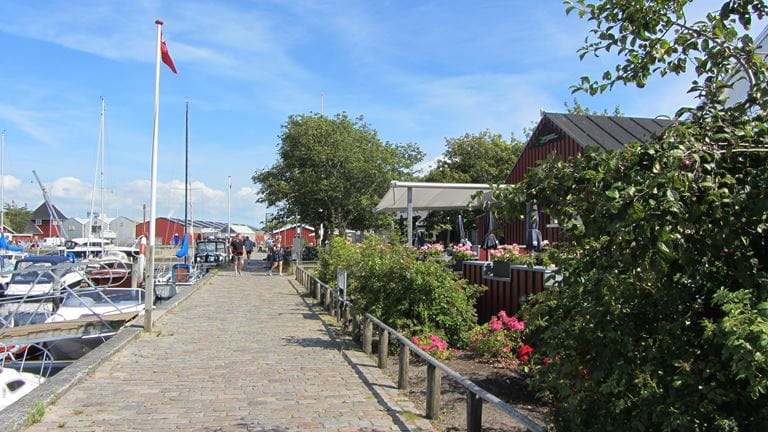
Guldborgsund Municipality entered the partnership as a number of plans for the city of Nykøbing F. were in the works: A master plan to transform the port area, a climate adaptation plan to protect the coast line, a master plan for a local water way and a number of local development plans for low-lying areas.
The perspective of potential new use and development of areas that could be at risk of flooding called for a comprehensive strategy for protecting the city. Realdania has supported the municipality in developing a short- and long term strategy for climate adaptation of both existing and future urban areas.
The project is still ongoing as of October 2022. This description will be updated with more information and material once the project has been concluded.
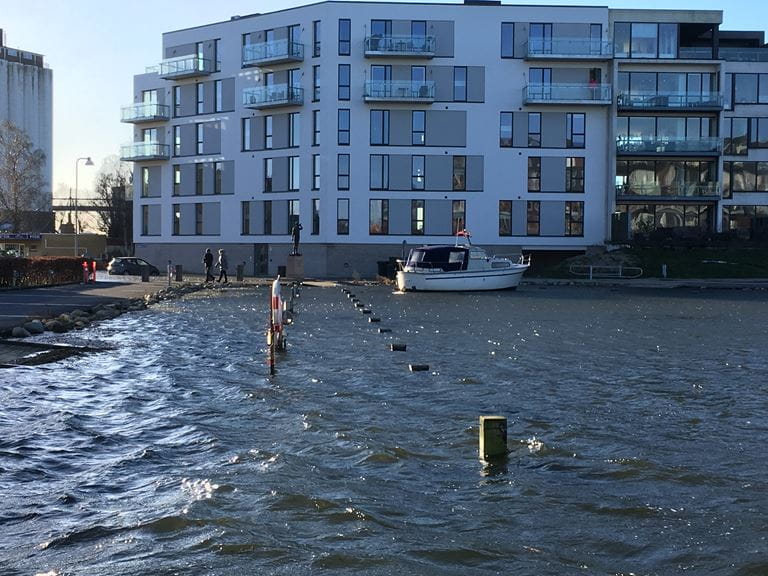
Today, the city of Taarbæk is known mostly as a suburb to Copenhagen, but a few centuries ago, Taarbæk was a lively fishing village that later became a preferred destination for wellness and recreation along the coast.
Realdania has supported the Municipality of Lyngby-Taarbæk in carrying out a process for engaging citizens and experts in developing a long-term vision and plan for protecting the community from flooding while preserving and revitalising its distinctive history and identity.
The project is still ongoing as of October 2022. This description will be updated with more information and material once the project has been concluded.
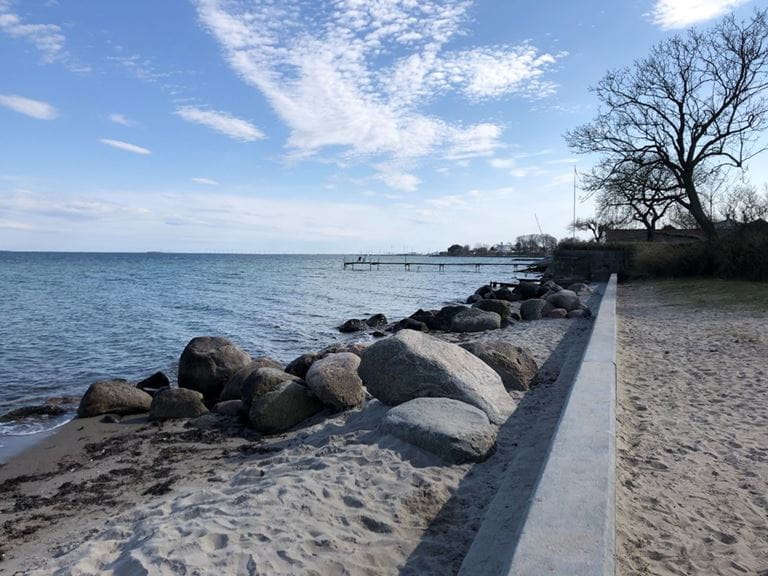
Nature based solutions for adaptability and added value
With sea levels rising at an unpredictable scale and pace, some cities are exploring how they can increase their resilience towards water rather than build more walls for protection. Drawing inspiration from the natural processes of the coastal landscape, they are examining the potential to create or restore natural dunelands, headlands and wetlands in shaping a more resilient landscape that can work as a barrier or ‘buffer zone’ between water and city when a storm surge hits.
These nature based solutions are promising for a number of reasons. For one, they can be adaptive, meaning they can be extended over time as we gain a better understanding of the effects of climate change on sea levels. Second, they hold a potential for increasing quality of life in the cities they protect by improving nature and wildlife as well as creating new recreational qualities for humans. And in doing so – by inviting people to experience and perhaps better understand the coastal landscape – they could even strengthen the connection between the city and water that likely made it an attractive place to settle in the first place.

